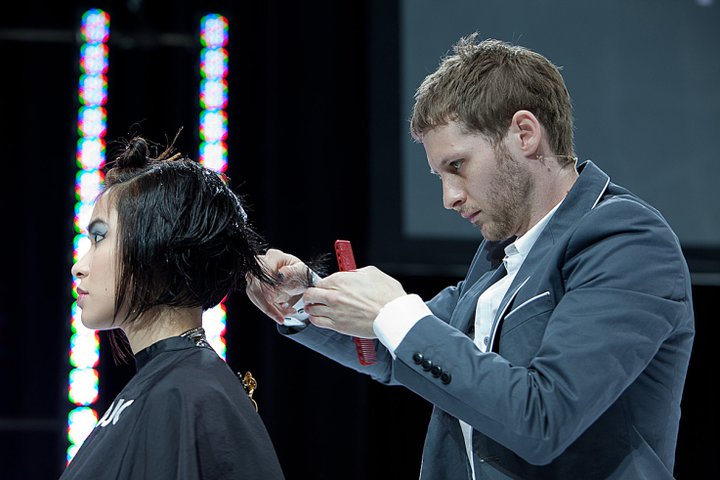
I was born into a skin family, and married into a hair family. While my skin-care routine has always been involved and longer than most people's, until relatively recently I paid minimal attention to my hair (no leave-in product, a haircut once a year, definitely no color, elastic band as default hair accessory). Becoming a part of the Neill family, however, has meant that I have had to step it up in the hair department. Having a brother-in-law who is a top stylist at Arrojo Studio has certainly helped. I turn to Tatum Neill for all my hair questions (and he is kind enough to not laugh at the stupid ones), product recommendations, and sometimes even a haircut in the courtyard of our place in New Orleans.

Recently, I sat down with him for a chat and listened and learned as he spoke about how to get the best haircut possible, his pet peeves, flat-irons and curling irons and blow-dryers, and more.
AP: What do you recommend clients do to ensure getting the best possible haircut when going to the salon?
TN: Do not use your previous stylist's language; each hairdresser has their own way of talking about things, so don't get tied up with the lingo. What I appreciate the most is when people bring a few pictures of what they are looking for. Pictures are worth a thousand words. The tricky part about images is that sometimes the hair has more to do with the styling than with the cut... so always be open to your hairdresser's recommendations.
AP: As a hairdresser, what are your pet peeves?
TN: Turtlenecks and lip gloss. When my clients come in wearing a turtleneck, it's hard to cleanly get to the hairline, and impedes the cut. And if I need to trim your bangs and you are wearing sticky lip gloss, the hair ends up on your lips and it creates a mess. Of course, like any hairdresser, while I appreciate some direction from my clients, I don't like it when clients want to direct me too much...
AP: Razor or no razor?
TN: The thing about a razor is that it needs to be new and sharp. Razors dull really quickly, and that is why razor cuts are sometimes bad. Also, it is essential to only use a razor when hair is wet or damp.
AP: Thoughts on at-home product use?
TN: Where do I start... typically, clients have three main concerns for at-home care: moisture, body and shine. So you usually want a trifecta of products: for curly hair, you need to use a product to bring moisture to the hair, a product to control the curl and a product to hold the curl; for straight hair, you want to use a product to bring moisture to the hair, a product to add body and a product to add shine.
The challenge is that nourishing products (ranging from conditioners to masks to oils) will compromise body, so it's all about balance. The hardest hair type to recommend product for is dry fine hair (think most colored blondes, for example). For that type of hair, a lighter moisturizing agent is essential as otherwise your hair will be nourished, but weighed down. Coarser hair can use thicker moisturizing products, of course. It's also key to show people how much product to actually use. I find that most of my clients will underuse product at home, only using about 1/3rd of the recommended amount. Regardless of product, however, I always remind my clients that no matter what they put in their hair, hair is like skin; what you put in your body will affect your hair. I hate to say this, but when styling runway models, I can always tell from their hair which ones eat and which ones don't.
AP: What is something few of your clients know?
TN: While it is generally known that pregnant women have thicker hair, and that once the baby arrives, hair thins out, people don't usually extrapolate from that to the general fact that hormones affect your hair. Not just during pregnancy... during your cycle, during menopause, etc. And this is true not just for women, of course. Men's hair will be affected by their hormones also.
AP: Any tips about blow-drying?
TN: I find that most people blow-dry their hair the same way they did as when they were 12, i.e. head upside down, blow air all around, with the end goal being drying the hair. There is not a lot of consciousness about the direction of the hair. When you are upside down, most of the air and heat is focused at the nape of the neck, so you end up bottom heavy in terms of volume. Instead, you want most of the volume on the crown, so you should focus the air and heat there. And remember to always blow-dry in the direction of the cuticle, to help seal it (which will give you shine); again, that is harder to do when your head is upside down. Remember also that if your roots are wet yet your ends are dry and smooth, the water will end up moving down the hair shaft from the roots to the ends, which will eliminate that nice dry smoothness. That means you need to make sure your roots are dry first, before drying the ends.
Also, next time you go see your stylist, ask him or her to show you how to hold your blow-dryer; most people have never been coached on this, and are trying to figure it out by themselves, and you would be amazed what a difference a slight tilt of the wrist will make! Another typical mistake is not to blow-dry your hair completely. The recommendation is to blow-dry your hair until it is 100 percent dry, even if you have curly hair. Until the hair is totally dry, the hydrogen bonds that shape it are not set. Same thing if you are letting your hair air dry: your hair needs to be left alone for as long as possible, until it is 100% dry. If you play with it too much you can cause frizz (because touching it breaks the hydrogen bonds and that is what causes frizz).
My favorite blow-dryers are made by TwinTurbo, Parlux and Elchim. I want a blow-dryer that gets really hot and has strong wind velocity, so that heat is evaporating the water, while the wind makes the process faster.
AP: What about flatirons and curling irons?
TN: The most important thing to realize about flatirons is that a professional flatiron needs to go up to 450 degrees to be used during permanent or semi-permanent straightening treatments. At that heat, the hair will be chemically altered. What this means is that for at-home use, you need to make sure that your flatiron has good temperature control. Don't ever use it about 400 degrees when doing your hair at home. I actually recommend a low to mid 300 temperature range. Hotter in this case is not better. 400+ degrees is for the hair professionals only. The concept is the same for curling irons, but it is harder to find a curling iron with temperature control capability. So do the following test, carefully of course: set your tool on a piece of paper; it if scorches it, it's too hot for your hair.